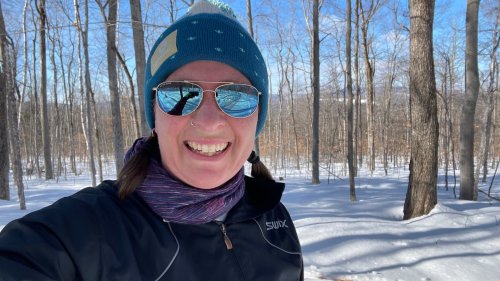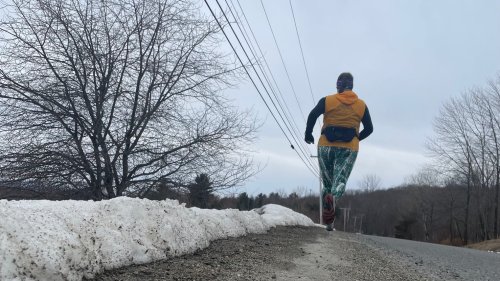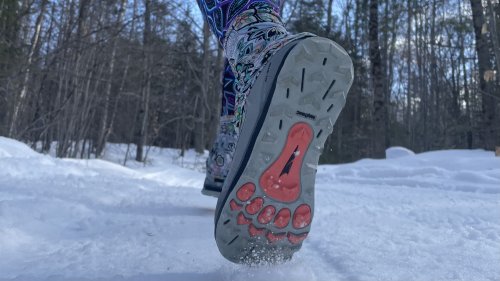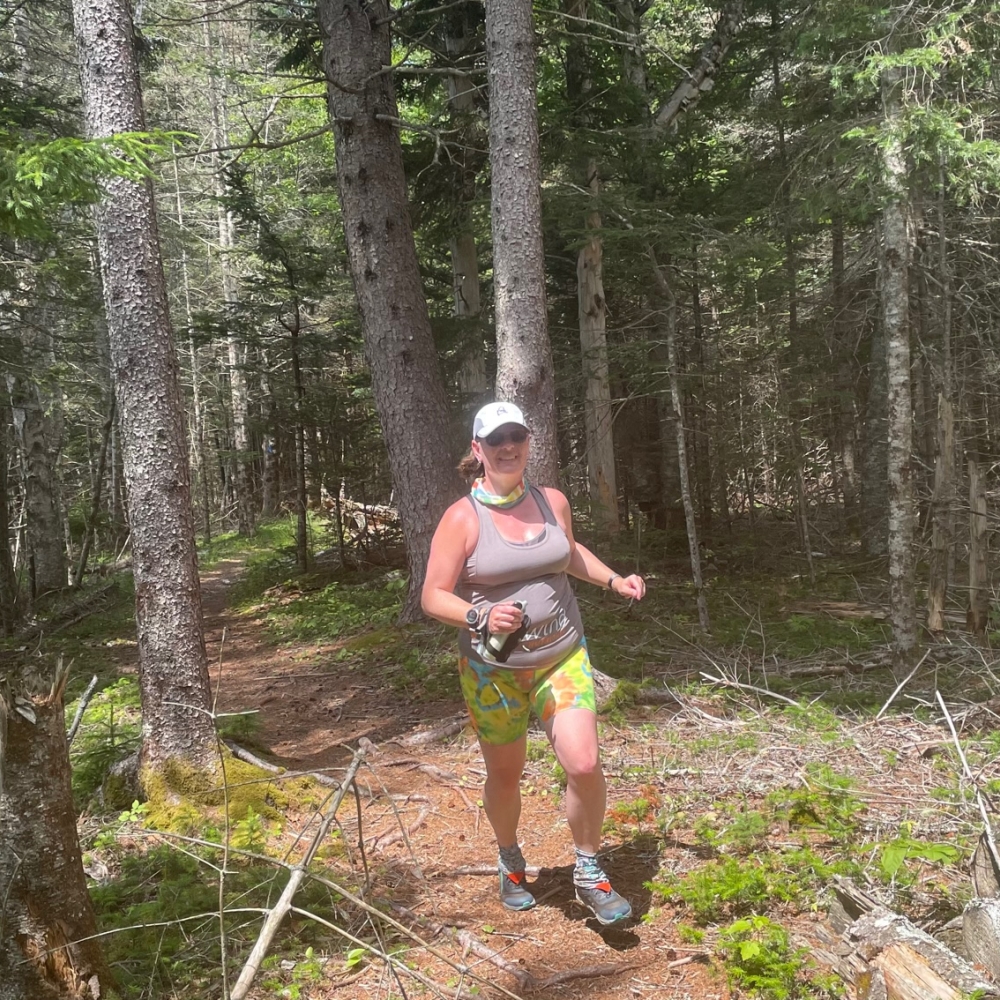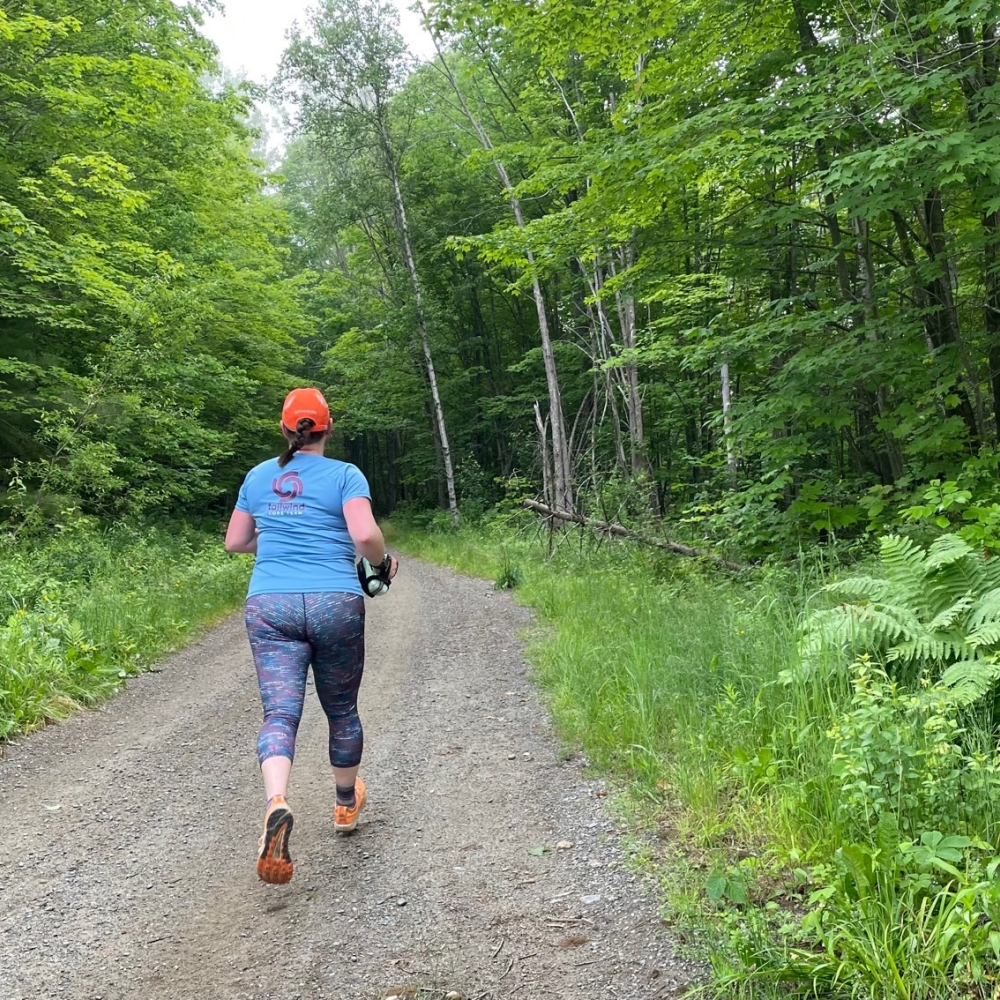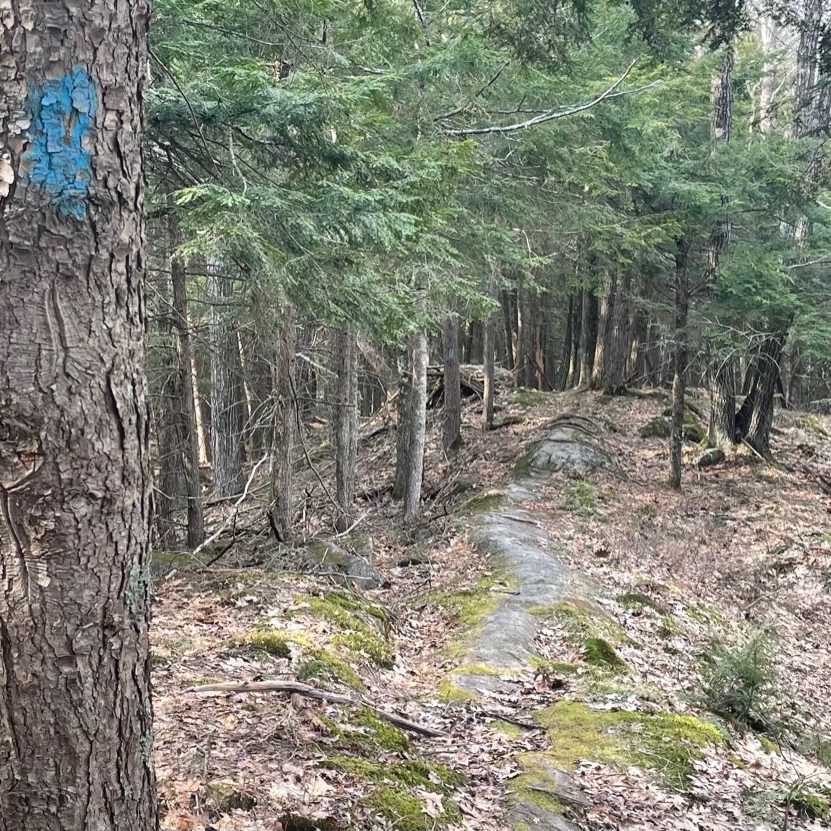I love running in winter! I'm naturally a sweaty kid, so when the temperatures drop my body feels much more comfortable. Plus, snow brings so many new trail adventures, as the terrain of familiar networks changes and as the snowmobile trails firm up for seasonal adventures.
Of course, we need to dress a little differently for winter running adventures. This isn't too hard, if you have a few key items and understand a couple of basic rules.
Start Chilly: Don't set out freezing, but if you're feeling a little nip in the air, you're probably dressed right. As you warm up, you'll lose that chill and probably have a comfortable run.. If you start warm, you'll overheat and sweat more that you want to--you really want to limit your sweat rate in the winter because there is a direct line from being wet to being hypothermic. We can warm ourselves up when we're dry, but once we're wet, we lose ground quickly. Ever get a chill after a summer run when you hung around in your sweaty jog bra too long? Winter just speeds up that process, so start chilly and manage your sweat rate.
Layers: The easiest way to manage your sweat and insulation is to dress in layers. Not only can you dial in your layers for today's specific conditions, but you can add or shed them if you're getting too hot on a climb or you start to get cool on a shady portion of trail. This goes for your hands too: layer your mittens and you'll always be comfy on a winter run!
No Cotton: This is a summer running rule too (ugh, chafing) but it takes on a new safety dimension in winter. Cotton traps moisture and in the winter, when you're wet you're cold. Even your undies matter--a cold, wet backside pulls heat from the major blood vessels in your groin, eventually chilling your legs and then core. Personally, I love wool shirts, socks and mittens in the winter. They keep you warm and wick moisture effectively.
Gore Tex Shoes: the insulation and waterproofing on a good winter running shoes will keep your little piggies toasty and warm. However, don't go crazy on your sock thickness. Remember that the shoe is already insulating your feet, so you don't need your chunkiest sock doing that work. Also, the waterproof fabrics used in these shoes do not wick moisture nearly so quickly as your other running shoes. If your feet get sweaty, they stay wetter, longer. If you start to get chilly, this extra moisture will make you colder, faster. A thinner sock helps control your sweat rate, so you're warm and drier for longer.
Gaiters: Surprisingly, these don't need to be waterproof unless you're out in wet weather or deep powder. You just need a spandex layer to keep snow from sticking to your socks and then melting down into your shoes. Why wear the Gore Tex shoes if you're just going to fill them with snow? A lightweight gaiter like Dirty Girl Gaiters is usually enough to keep the snow out and your feet dry.
Getting out for a winter run is so much more fun when you're dressed well for the weather. Once you get your layers and your winter-specific gear dialed in, you'll have a great time out there on a frosty day.



